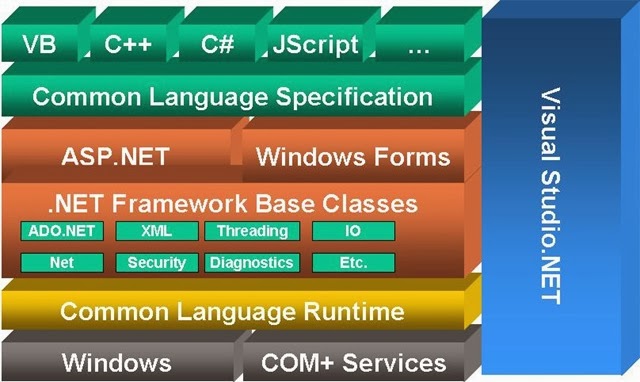.Net Framework is a stage or advancement environment to flawlessly make web-provisions that are open through customer machines from over the globe. These web-requisitions receive open models, for example, extensible Markup Language (XML), Hypertext Transfer Protocol (HTTP), and Simple Object Access Protocol (SOAP) to associate with provisions that are accessible in different stages.
.Net Framework is stage autonomous and dialect free. This implies that .Net Framework permits you to utilize diverse customizing dialects, for example, Vb.net, C#, Jscript, Vbscript, and Managed C++ and run provisions on distinctive stages, for example, Unix, Macintosh, and Linux. Besides, .Net Framework empowers you to utilize different off-the-rack libraries that help the advancement of requisitions quicker, less demanding, and shabbier. .Net Framework now upholds over 20 distinctive customizing dialects.
The explanation for why how .Net Framework upholds such a variety of customizing dialects is overall replied by the idea of Common Language Runtime (CLR) motor. The CLR motor, rather than gathering the code into local code, assembles the code into Microsoft Intermediate Language (MSIL). The MSIL, a set of directions, then interprets the code into local code. This notion of CLR is noteworthy in making .Net Framework, stage and dialect autonomous. What's more, CLR is answerable for run-time administrations, for example, dialect joining, security authorization, memory process, and string administration. Hence, .Net Framework furnishes a wide foundation to make web-provisions. Microsoft has ordered .Net Framework into two classes, for example, CLR and .Net Framework class library.
Normal Language Runtime: The CLR, as specified in the above section, gives regular runtime administrations to all .Net requisitions. Also, the CLR decreases the engineer's a great opportunity to compose long code for utilizing characteristics, for example, life-cycle administration, solid sort naming, cross-dialect special case taking care of, and element tying to transform business rationale into a reusable segment.
.Net Framework class library: This class library incorporates predefined sets of usefulness that designers can use in their requisitions. The library comprises of three key segments:
o Asp.net
o Windows Forms
o Ado.net
The .Net Framework furnishes various preferences, for example, fewer lines of code, complete arrangement, simplicity of organization, web settings and web.config, and reserving. By fewer lines of code, we imply that .Net Framework permits designers to utilize Web controls, consequently investing more of an opportunity in executing requisition configuration and the general stream of provision. An alternate imperative some piece of .Net Framework is that everything incorporating Web controls, Web structures, and server-side pieces of code are assembled when a page is asked for assemblage. Simplicity of arrangement alludes to the thought that segments in .Net Framework could be accumulated on your machine and afterward transferred with all the pages in the /canister index. Dissimilar to a web-requisition in ASP, where pages must be transferred and the parts of the pages must be enlisted with the working framework, the segments in a web-provision in .Net Framework require not be enrolled.
Web settings implies the design of .Net provisions that could be achieved through web.config, a XML based index. Since a web.config document is in XML, it is straightforward and it is likewise automatically modifiable. The point when a web.config index is adjusted the machine discovers the progressions instantly. This empowers brisk setup of .Net requisitions. Storing is the term used to depict the procedure of gathering ordinarily gained entrance to information into memory for brisk recovery. .Net Framework help three sorts of reserving: yield storing, information storing, and part storing.



















0 comments:
Post a Comment